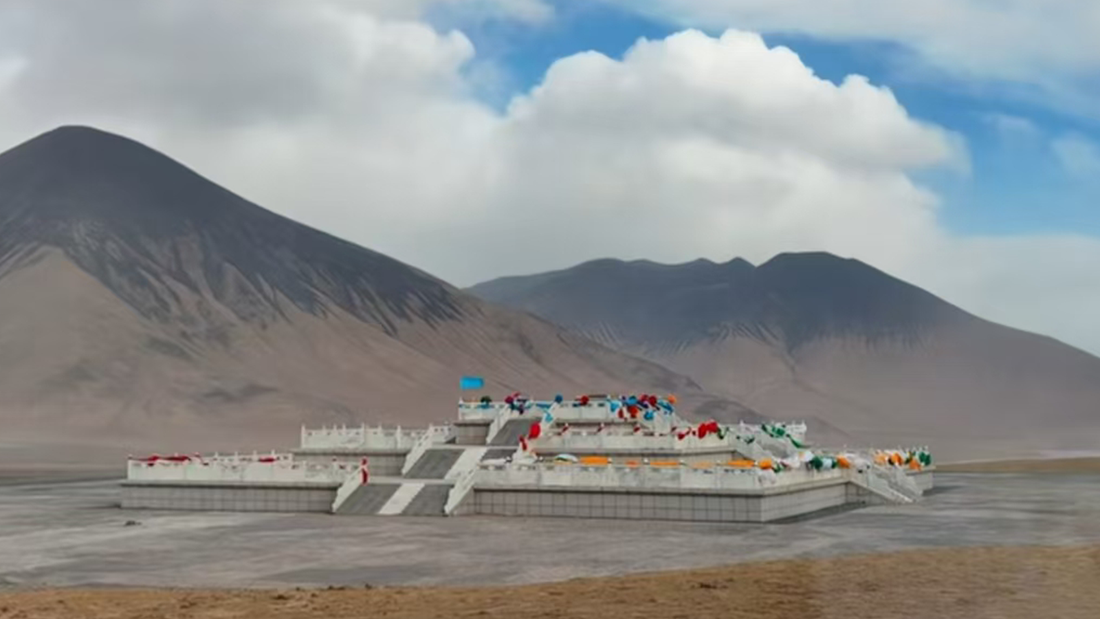
The Stone That Saved My Mind: A Journey into the Kunlun Mountains
Share
My name is Wei Zhang. I’m a product designer from Hangzhou, China. For most of my adult life, I worked hard to build a good career. But over time, the constant pressure to meet deadlines and succeed began to consume me. I developed chronic anxiety. I couldn’t sleep through the night, and each morning felt heavier than the last. Therapy, herbal remedies, breathing exercises—none of it made a real difference.

One night, lying awake in frustration, I remembered something my grandmother once said: “When your heart is clouded, go to the mountains.” That sentence stayed with me. I began researching the Kunlun Mountains, long considered sacred in Taoist philosophy. These mountains are believed to be a bridge between Heaven and Earth—a place where ancient wisdom still lingers. I discovered there was a sanctuary called Yuxu Palace, hidden in the highlands. Without much thought, I packed my things and left.

The Taoist temple is located between the towering mountains. A Taoist master greeted me and listened to my story. After a quiet pause, he said, “You’re not ill. You’re out of rhythm.” He spoke of a cave, deeper in the mountains, where a rare form of black obsidian could be found—imbued with powerful energy that the mountain itself had cultivated over thousands of years.

He told me to sit beside it every day. “Let your mind be still. Don’t seek healing. Let it come.”
So I went—every morning, alone, to that cave. I sat beside the dark, glass-like stone, listening only to the wind and my breath. The first few days were hard. My thoughts raced. But gradually, something shifted. After ten days, I noticed calm returning. By the thirtieth day, I was sleeping again—for the first time in years.

I returned to the Taoist master and humbly asked if I might collect some of the obsidian to help others who were also suffering. He shook his head. “This stone is part of the mountain. It’s not meant to be taken.”
I explained that my intention wasn’t profit. I told him about the people I knew—friends, colleagues, strangers—who lived in mental chaos, just like I had. I shared my idea: to create spiritual tools using the stone, made by traditional Chinese artisans, and to give a portion of every sale to help restore the aging Yuxu Palace.
He studied me for a long moment. Finally, he said, “If your heart is true, take only what the mountain offers.”
That’s how the Kunlun Protector was born.
Working with a master craftsman, we shaped the stone into pendants and bracelets. Each piece carries the Yin-Yang symbol and the Bagua, sacred elements in Taoism that represent balance and energetic harmony.
In Taoist tradition, energy flows through all living things. Disruption—through stress, fear, or modern overwhelm—creates illness and imbalance. The Yin-Yang teaches that every force in life has a counterpart, and healing comes when they are in harmony. The Bagua, with its eight trigrams, is used to map and correct energy imbalances in people and places. When worn with intention, these symbols act as tools of alignment—reminders that balance is always possible.
We encourage wearers to use the Kunlun Protector during meditation or reflection. The obsidian is said to absorb negative energy, while the symbols help realign your inner flow. More than jewelry, these are spiritual protection tools, designed with care, rooted in tradition.

Because the obsidian is limited and ethically gathered, every piece is part of a limited edition. Once they’re gone, they’re truly gone.
And remember: a portion of each purchase helps preserve Yuxu Palace, the temple that made all this possible.
If you're someone who struggles with anxiety, imbalance, or emotional exhaustion, I hope this story finds you. The Kunlun Protector helped me find my way back to peace. Maybe it will for you, too.








25 Kommentare
I’m skeptical but also deeply curious. Following now just to see more updates. 😅
As someone who’s studied Taoism a bit, I love how respectfully this story was told. Well done.
Wait, so this obsidian is from an actual Taoist mountain temple?? That’s incredible. Feels like something out of a movie.
The part about sitting in silence next to the obsidian stone… it made me cry a little. I’ve felt that kind of stillness before and forgot how much I need it again
I’m a nurse, and burnout is so real. I’ve been looking for something symbolic to wear during shifts—this just might be it.